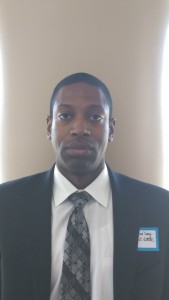
Mechanical Engineering
Area of Doctoral Study: Mechanical Engineering
Undergraduate Institute: University of Maryland, College Park
Graduate Institute: UMBC
Research Advisor: Timmie Topoleski
Description of Research
As of 2003, more than 200,000 total hip preplacement operations are performed each year in the United States alone. Total joint replacement has been one of the most successful treatments for patients with severe pain due to arthritis. The number of total hip replacement surgeries performed annually in the US is expected to more than double by 2030. The bearing surfaces of most hip implants are made of ultra-high-molecular-weight polyethylene (UHMWPE), cobalt-chromium molybdenum (CoCrMo) and titanuim alloys, or ceramics (alumina). In our research we create and investigate novel micro- and potentially nano-textured CoCrMo-carbide and titanium carbide surfaces for prosthesis implants. These surfaces are created using a micro-wave plasma chemical vapor deposition (MPCVD) system. These micro-textured surfaces have been shown to have hardness values far greater than, and coefficients of friction far lesser than the as received material. Novel titanium-carbide and CoCrMo-carbide surfaces created in our work have the potential resist corrosion and wear. In addition, the textured surfaces have the potential to retain lubricant and trap abrasive wear particles to prevent them from further damaging the surface. Of significant interest is the possibility that this research could produce a titanium carbide surface that retains the biocompatibility of the substrate while achieving a hardness and wear resistance approaching that of CoCrMo. This research may not only improve on issues identified with metal-on-metal implants but may improve the wear characteristics of metal-polyethylene couples as well, because lower surface friction could reduce polyethylene wear. This process, fundamentally, could be applied to any metal that forms carbides. This opens possibilities beyond biomedical applications.